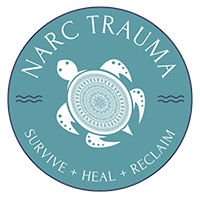Understanding the Physical Symptoms of Narcissistic Trauma

By Brenda Stephens, Licensed Professional Clinical Counselor
Exploring the Complexities of Narcissistic Trauma
Narcissistic trauma, stemming from prolonged exposure to narcissistic abuse, is a complex psychological phenomenon that can manifest in various physical symptoms. These symptoms often go unnoticed or are attributed to other causes, making it crucial to delve deeper into understanding the intricate web of effects it can have on an individual’s well-being. By shedding light on these complexities, we can better grasp the far-reaching impact of such traumatic experiences.
One of the key aspects of narcissistic trauma is the insidious nature of emotional manipulation and gaslighting. These tactics erode a person’s sense of self-worth and reality, leading to heightened stress responses within the body. This prolonged state of heightened arousal can contribute to physical manifestations such as chronic pain, digestive issues, and even autoimmune disorders. It’s essential to recognize these symptoms as potential indicators of underlying narcissistic trauma.
Moreover, the impact of narcissistic trauma extends beyond the emotional and psychological realms. Research suggests a strong correlation between trauma from narcissistic abuse and changes in brain structure and function. These alterations may influence the body’s stress response system, resulting in a cascade of physical symptoms that can profoundly affect an individual’s health and well-being. Understanding these intricacies is paramount in addressing and healing from narcissistic trauma.
In addition to the physiological effects, narcissistic trauma can also disrupt one’s interpersonal relationships and overall quality of life. The constant invalidation and manipulation experienced in abusive situations can create a distorted perception of reality, making it challenging to trust others or form meaningful connections. These relational difficulties, coupled with the burden of physical symptoms, can further exacerbate the impact of narcissistic trauma on an individual’s daily functioning.
Exploring the multifaceted nature of narcissistic trauma requires a comprehensive understanding of its origins, manifestations, and long-term consequences. By acknowledging the intricate interplay between emotional, psychological, and physical aspects of trauma, we can take significant steps towards recognizing, addressing, and ultimately overcoming the pervasive effects of narcissistic abuse.
Recognizing the Signs of Narcissistic Abuse
In the context of narcissistic abuse, recognizing the signs and patterns of manipulation is crucial for safeguarding one’s mental and physical well-being. Gaslighting, a common tactic used by narcissists, involves distorting reality and undermining the victim’s perception of the truth. This insidious form of emotional manipulation can lead to self-doubt, confusion, and a sense of powerlessness.
Another hallmark of narcissistic abuse is the cycle of idealization, devaluation, and discard, commonly referred to as the ‘narcissistic cycle.’ During the idealization phase, the abuser often presents themselves as charming, attentive, and perfect, creating a sense of euphoria for the victim. However, this idealized image is swiftly shattered during the devaluation phase, where the victim is subjected to criticism, blame, and emotional cruelty.
The discard phase, characterized by abrupt rejection or abandonment, further reinforces the victim’s feelings of worthlessness and inadequacy. These cyclical patterns of abuse can have profound effects on an individual’s self-esteem, mental health, and overall sense of safety. By understanding these dynamics, individuals can better identify and address the signs of narcissistic abuse in their relationships.
Moreover, narcissistic abuse often occurs in subtle ways, making it challenging for outsiders to recognize the severity of the manipulation. Victims may internalize the blame and gaslighting, further perpetuating feelings of shame and self-blame. By shedding light on these covert tactics and their detrimental effects, we can empower individuals to break free from the cycle of abuse and seek the support and healing they deserve.
Recognizing the signs of narcissistic abuse is the first step towards reclaiming one’s agency and rebuilding a sense of self that is not defined by the abuser’s distorted perception. Through education, awareness, and advocacy, we can create a culture that prioritizes the well-being and safety of all individuals, free from the insidious grip of narcissistic manipulation and control.
Understanding the Link Between Coercive Control and Emotional Abuse
Coercive control, a pervasive form of psychological abuse, is intricately linked to emotional manipulation and power dynamics in abusive relationships. This insidious pattern of control involves tactics that undermine the victim’s autonomy, self-esteem, and sense of safety. By exerting dominance and instilling fear, the abuser establishes a coercive environment where the victim feels powerless to challenge or escape the abuse.
In the context of emotional abuse, coercive control operates through subtle yet potent means of manipulation, coercion, and isolation. The abuser may employ tactics such as gaslighting, intimidation, and humiliation to maintain control over the victim’s thoughts, emotions, and actions. Over time, the cumulative effect of coercive control can lead to profound psychological distress, trauma, and long-lasting emotional scars.
Furthermore, the interplay between coercive control and emotional abuse can create a cycle of dependency and subjugation, wherein the victim’s self-worth becomes intricately tied to the abuser’s validation and approval. This toxic dynamic perpetuates feelings of powerlessness, shame, and inadequacy, making it exceedingly difficult for the victim to break free from the cycle of abuse. Understanding this link is crucial in dismantling the pervasive effects of coercive control and emotional abuse.
By shedding light on the connection between coercive control and emotional abuse, we can empower individuals to recognize the red flags of abusive behavior and seek support in breaking free from toxic relationships. Through education, advocacy, and community resources, we can create a culture that values respect, autonomy, and healthy boundaries, free from the destructive influence of coercive control and emotional manipulation.
The Role of EMDR Therapy in Healing Narcissistic Trauma
Eye Movement Desensitization and Reprocessing (EMDR) therapy is a powerful tool in addressing the deep-seated wounds of narcissistic trauma and abuse. This innovative therapeutic approach aims to help individuals process distressing memories, reframe negative beliefs, and promote healing on a holistic level. By engaging in bilateral stimulation techniques, such as eye movements or tapping, clients can access and reprocess traumatic experiences in a safe and supportive environment.
One of the key benefits of EMDR therapy is its ability to target the root causes of trauma and facilitate adaptive resolution of painful memories. By desensitizing the emotional charge associated with past experiences, individuals can regain a sense of control, self-empowerment, and resilience. This process allows clients to release the grip of traumatic triggers and reframe their narrative towards one of healing, growth, and self-compassion.
Moreover, EMDR therapy integrates elements of cognitive-behavioral therapy (CBT) and mindfulness practices to support clients in developing coping strategies, emotional regulation skills, and self-soothing techniques. By addressing the somatic and psychological manifestations of narcissistic trauma, individuals can cultivate a deeper understanding of their responses, triggers, and coping mechanisms, paving the way for lasting healing and transformation.
Through the collaborative and empowering process of EMDR therapy, individuals can embark on a journey of self-discovery, healing, and reclaiming their sense of agency and autonomy. By working with a skilled EMDR therapist, clients can explore the depths of their trauma, integrate fragmented aspects of self, and foster a newfound sense of wholeness and empowerment. EMDR therapy offers a path towards profound healing and liberation from the chains of narcissistic trauma.
Exploring the Connection between Narcissistic Trauma and the Vagus Nerve
The vagus nerve, a key component of the autonomic nervous system, plays a vital role in regulating various bodily functions, including heart rate, digestion, and inflammation. Recent research has highlighted the profound influence of narcissistic trauma on vagal tone and functioning, shedding light on the intricate connection between emotional trauma and physical health. By understanding the impact of trauma on the vagus nerve, we can uncover new insights into the mind-body relationship and its implications for healing and recovery.
In the context of narcissistic trauma, prolonged stress and emotional dysregulation can dysregulate the vagus nerve, leading to disruptions in the body’s stress response system and inflammatory pathways. This dysregulation may manifest in a range of physical symptoms, including gastrointestinal issues, cardiovascular problems, and immune system dysfunction. The bidirectional relationship between emotional trauma and vagal tone underscores the importance of addressing both psychological and physiological aspects of healing.
Furthermore, practices such as mindfulness, diaphragmatic breathing, and somatic experiencing can help regulate vagal tone, promote relaxation, and restore balance to the autonomic nervous system. By engaging in self-care techniques that support vagal tone, individuals can cultivate resilience, reduce the impact of stress, and foster a sense of emotional well-being. This integrative approach to healing acknowledges the profound link between narcissistic trauma, vagal tone, and overall health.
By exploring the connection between narcissistic trauma and the vagus nerve, we can deepen our understanding of the mind-body connection and the role of the autonomic nervous system in trauma recovery. Through education, research, and clinical interventions that target vagal regulation, we can empower individuals to embark on a journey of healing, resilience, and holistic well-being in the aftermath of narcissistic abuse. The healing journey begins with awareness, compassion, and a commitment to reclaiming one’s sense of wholeness and vitality.







